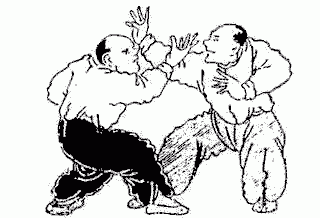Yizong Bagua Men
Our lineage and school are called YiZong. YiZong was the generation name given to Zhang Zhunfeng by Gao Yisheng, a master in the Cheng Tinghua branch of Baguazhang. It was also the name that Zhang Zhunfeng gave to his school.
Yi Zong Bagua has now become one of the most prolific and successful lineages of Baguazhang in the world. It began with one of Gao Yisheng’s most powerful and able fighters, Zhang Zhunfeng, coming to Taiwan. From there he took many students over the years, but it was his first group of disciples who received the whole of his fighting skills, foremost among them the three Hong brothers – Hong Yiwen, Hong Yixiang, and Hong Yimian.
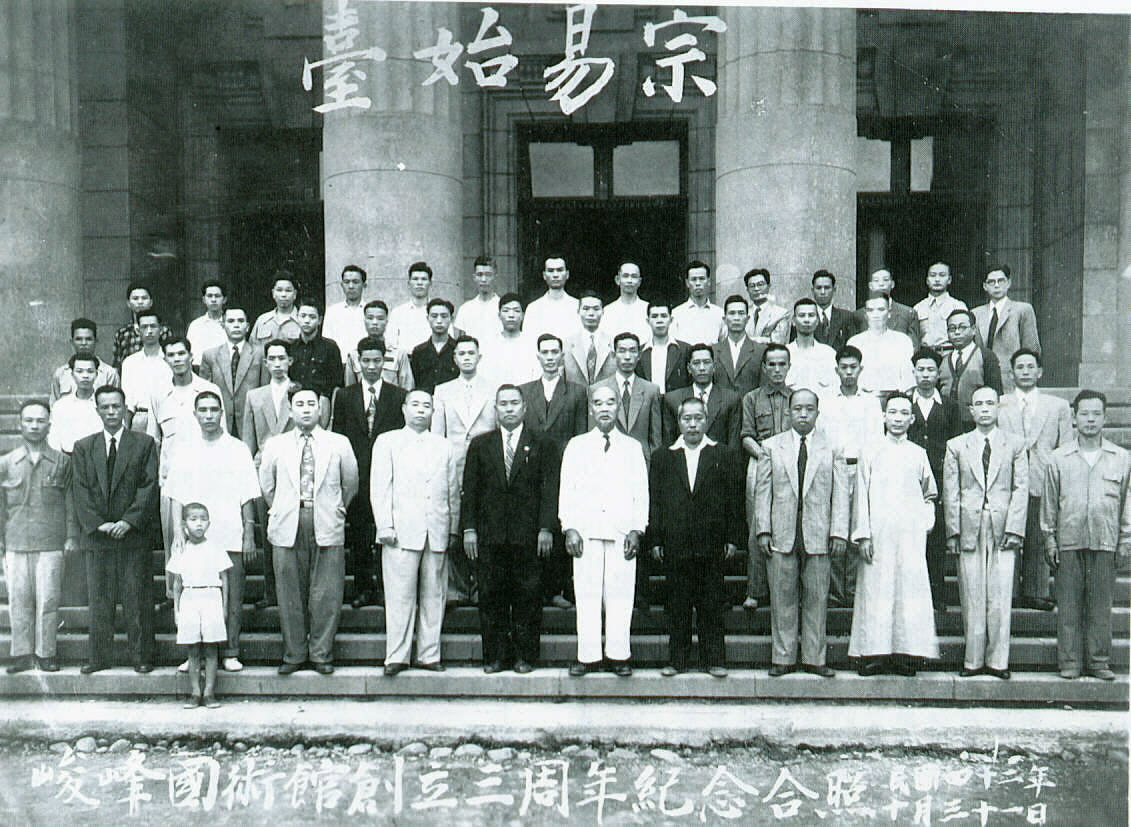
The Hong (also sometimes romanized as Hung) Brothers began their training with Zhang in the late 1940s in Taibei, Taiwan. Their father had a very successful business with a monopoly on candles, but back in the day was worried about being able to defend his family’s business interests. Towards this effort, he had procured martial arts teachers of all sorts for his sons, Hong Yiwen, Hong Yixiang, and Hong Yimian chief among them. In the late 40s, they had begun to study the fighting arts with Zhang Zhunfeng and became very capable and successful fighters. They eventually all taught their own classes in the martial arts.
Luo Dexiu began his study of the Internal Martial Arts of Baguazhang, Xingyiquan and Taijiquan under Hong Yixiang. Luo Dexiu’s early years were devoted to the study of learning to fight with internal martial arts. He trained, mostly Xingyiquan at that point, with the primary goal of learning to win fights, competitions and challenge matches, and became one of Hong’s best fighters. It is later when he began to research YiZong martial arts more deeply that he became keenly interested in Baguazhang. He found that the core of Zhang Zhunfeng’s martial arts was Zhang’s training in Baguazhang under Gao Yisheng. Luo Dexiu went on to study Gao style Baguazhang not only with his primary teacher Hong Yixiang, but many of Zhang’s students, including other of Zhang’s first disciples, Hong Yiwen and Hong Yimian. Later, he studied Bagua intensively with Liu Qian, an early student of Sun Xikun, furthering his knowledge of Bagua as a whole and its principles and teaching methods in particular. Today Luo Dexiu carries on the YiZong tradition through his teaching of Gao style Baguazhang and Hebei Xingyiquan through his classes in Taipei, Taiwan and by his yearly seminar tours throughout Europe and America. Luo Dexiu’s school is called YiZong Bagua Men Qian Kun She.
George Wood first met and began training with Luo Dexiu Laoshi at a seminar in 1991. He was able to move to Taiwan to study full-time with Luo Laoshi in 1995 and stayed in Taiwan until 2002. He continues to train with Luo Laoshi when he hosts his annual seminars and when he gets the opportunity to return to Taiwan.
In Baguazhang our lineage is as follows:
Dong Haichuan – Cheng Tinghua – Gao Yisheng – Zhang Zhunfeng – Hong Yixiang – Luo Dexiu – George Wood
Under Construction and Coming Soon…
Yizong History Outline
A broad outline of the major points covered in the history of our Martial Arts
Origins
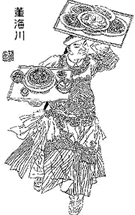
Yizong Bagua is a lineage of Baguazhang that has been passed down as a living martial arts lineage from the founder (Dong Haichuan) to its modern adherents (Luo Dexiu and his students, among them George Wood and his students). When I mention that it is a living martial arts lineage, the emphasis is on “living.” Many traditional martial arts lineages extant in the world have had breaks in their tradition. There were times it wasn’t practiced for actual fighting and wasn’t practiced and passed down as such, even if there was a later attempt to rekindle their martial tradition. In our lineage, each generation were actual martial artists, using the arts for fighting and training in it to fight.
Yizong Baguazhang began with Dong Haichuan teaching Cheng Tinghua – a wrestling expert who was known for his skills and strength to such an extent that he was often able to subdue opponents without hurting them. The full integration of wrestling and striking with the circular, continuous body movements (known as the swimming dragon body) is one hallmark of this style and became an envy to those in the martial world.
Yizong Bagua is a lineage name of one of our most important practitioners, Zhang Zhunfeng, given to him by his teacher, Gao Yisheng. Gao Yisheng trained with Cheng Tinghua himself and one of his top disciples, Zhou Yuxiang. Most important to our lineage is that Zhang Zhunfeng would eventually move to Taiwan where he taught Hong Yixiang and his brothers (Hong Yiwen and Hong Yimian). Luo Dexiu is the main teacher in the Yizong Bagua branch teaching today and is greatly responsible for its spread throughout North America, Europe and Asia. Luo Dexiu is a lineage disciple and champion fighter under Hong Yixiang. Luo also studied as often as he could with his brothers: Hong Yiwen and Hong Yimian, as well as learning from many of their brothers and other disciples of Zhang Zhunfeng.
One additional area where Yizong Bagua is unique is that it is a beneficiary of a lot of the intermixing of northern Chinese fighting arts. Cheng Tinghua was friends with Li Cunyi and Zhang Zhaodong, both famous masters of Xingyiquan who would go on to learn Baguazhang from Cheng Tinghua and Dong Haichuan. Gao Yisheng and Zhang Zhunfeng both studied their Xingyiquan from Li Cunyi. Another of Gao Yisheng’s famous students and a friend of Zhang Zhunfeng, Wu Mengxia, had also studied in this intermix of martial artists such as Gao Yisheng and Han Muxia (a student of Zhang Zhaodong). Not only did all this generational intermixing of martial arts lead to our two arts commonly being taught alongside one another, but it has also led to our Baguazhang lineage to be particularly broad in scope. There has been a history of bringing in new views and information, in sharing training and fight experiences throughout the years.
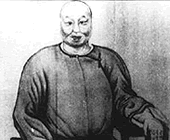
Dong Haichuan
Dong Haichuan is, if not the founder of Baguazhang, the modern progenitor of the art. During his lifetime it was apparently called zhuan zhang (turning palm). He was born in the early 1800s and had extensive training in a number of local martial arts in his youth. He eventually set out to research more of the martial arts and to contest with others. He travelled China extensively at the time and eventually also learned a type of Daoist meditation that involved walking a circle. All of this background informed his eventual teaching and practice of what we today know of as Baguazhang.
Cheng Tinghua
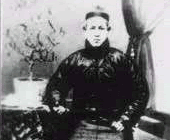
One of Dong Haichuan’s most celebrated students was named Cheng Tinghua. Cheng was originally a successful wrestler before studying Baguazhang. He sold and repaired eyeglasses by trade, and so was sometimes referred to as “Eyeglasses” Cheng. One apocryphal story of his training was that he was able to sit on one leg with the other crossed over as if he was sitting in a chair while working. He would sit like this, without a chair, switching legs throughout the day, to practice his stancework and leg strength while he would work in his shop. Cheng Tinghua eventually taught in Dong Haichuan’s school and took challenges for him. His level of understanding of the arts was considered the highest among all of Dong’s students. He was able to understand, use and convey the principles and practice of Baguazhang to such an extent that he influenced the development of not just his own students but nearly all those who trained alongside him as classmates.
Zhou Yuxiang
Zhou Yuxiang was an early student of Cheng Tinghua, famous for his fighting prowess and his extensive understanding of the use of zhuangzhang (crashing palm) and opening palm (kaizhang, of which zhuangzhang is a subset). He became known as “peerless palm” Zhou. When Gao Yisheng first met Zhou, it is said that they crossed arms (fought or sparred) three times. In those three attempts by Gao to defeat Zhou, he was dropped by Zhou’s crashing palm each time nearly immediately after the start of the bout. This profoundly affected the young Gao such that he knelt at Zhou’s feet to become a student. After extensively training him, Zhou took Gao to his teacher, Cheng Tinghua, for further instruction and to eventually become his disciple.
Li Cunyi
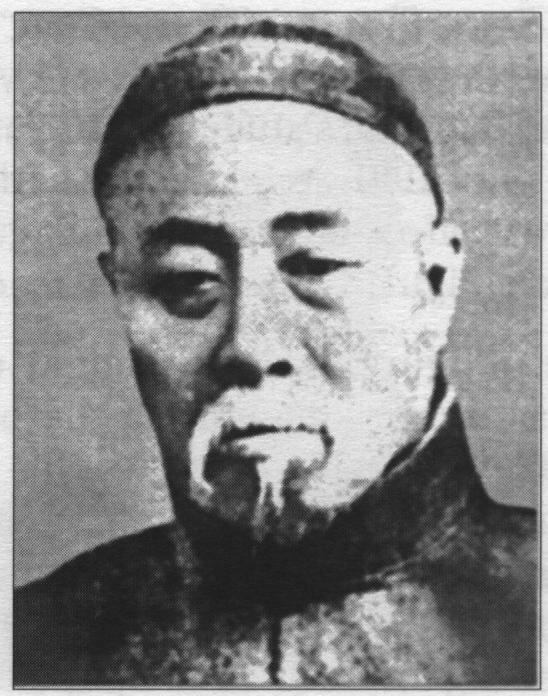
Our system of Xingyiquan comes directly from Li Cunyi, though it is often rumored that the majority of Zhang Zhunfeng’s instruction at Li Cunyi’s school was actually at the direction of Li Cunyi’s son. Not only did Zhang Zhunfeng study Li Cunyi’s Xingyiquan, but so did Gao Yisheng. Li Cunyi was also a friend of Cheng Tinghua and although he was listed as a disciple of Dong Haichuan, he probably learned the majority of his Baguazhang from Cheng Tinghua.
As an aside, I often explain to students who ask about how our systems of Bagua and Xingyi relate: I train both Bagua and Xingyi, my teacher Luo Dexiu trains both Bagua and Xingyi, his teacher trained both Bagua and Xingyi (Hong Yixiang), his teacher trained both Bagua and Xingyi (Zhang Zhunfeng), his teacher trained both Bagua and Xingyi (Gao Yisheng and Li Cunyi), both Gao Yisheng and Li Cunyi trained both Bagua and Xingyi, and their teacher Cheng Tinghua trained in Bagua and (at the very least) had a lot of friends and students who trained in Xingyi. It’s hard not to see some overlap in this history.
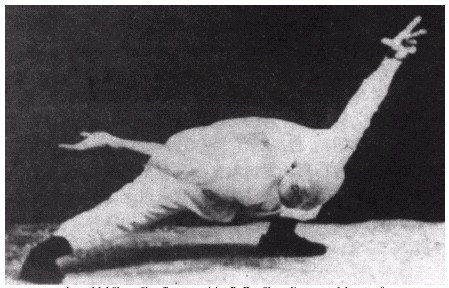
Zhang Zhaodong
Zhang Zhaodong was a close friend, training partner, and business associate of Li Cunyi. He was also a very famous martial-arts master in his own right. He often taught in the same school and bodyguard company (The Warriors Association). One of his more famous disciples was Han Muxia, who made his fame by defeating a western boxer and strongman. Another disciple of his became famous for writing a book on Baguazhang, Jiang Rongqiao.
Gao Yisheng
Gao Yisheng is one of the more important figures in our lineage. Our Baguazhang lineage is that of Gao Yisheng, it is oftentimes referred to as the Gao style. It has also been written as the Cheng Style Gao Branch Swimming Dragon Eight Diagram Palm.
Han Muxia
Han Muxia was a highly accomplished student of Zhang Zhaodong. One of the most repeated stories of him was of his win over a foreign strongman and boxer. He would later leave Zhang’s school and teach on his own. One of his main students was a renowned fighter as well, Wu Mengxia.
Wu Mengxia
Wu Mengxia was a very dedicated martial artist who was known for his fighting skills. He was also a good friend of Zhang Zhunfeng; they were often training and sparring partners and they helped to introduce each other to various teachers. Wu Mengxia trained extensively with his original Bagua teacher Han Muxia before eventually meeting and being defeated by Gao Yisheng. He knelt to become Gao’s student and was one of his most successful fighters and students. Wu, unfortunately, remained in China after the takeover by the communists and due to his previous connections and renown was made to suffer.
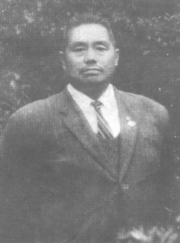
Zhang Zhunfeng
Zhang Zhunfeng had trained in a number of systems of martial arts while owning his own trading goods business, He was a successful businessman in China who trained for his own interest and well-being before coming to Taiwan and making martial arts his profession. Because of his wealth, he was able to get highly valued information and training that was above and beyond other students in the schools he trained at. He would often tell the Hong brothers how he had to pay for this information in gold.
He used his martial arts skills to protect himself and his investments, for to live in China as a businessman during this time was a dangerous way of life. In Taiwan he was occasionally accosted by rivals, he had to fight off challengers. One story from his time very early on in Taiwan is that he had gone to the market to pick up vegetables. He was attacked by a triad gang composed of around 30 guys with staves. He took one of their staffs away from them and beat the rest of them senseless with it alone. He was the only one standing at the end of this encounter – placed his vegetables on the staff and walked home. He had many challengers in Taiwan when he began to teach and was often at such a skill level above these challengers that he was able to just playfully handle them without hurting them. He gained a reputation from these encounters not just for his incredibly high fighting skill, but his morality and compassion as well. He could have ruthlessly beaten many of these people for daring to come after him, but instead often made new friends in the process. He would even help out some friends of his in the future by fighting in their place, such as his help in fighting for Wang Shujin and teaching him how to fight.
Zhang Zhunfeng taught in Taiwan for decades. His earliest students were directly taught by him with the primary goal being to fight for real. In the early 1960s he had some health scares that left him unable to continue teaching martial arts, but his wife eventually opened her own classes again and took students.
The Hung Brothers
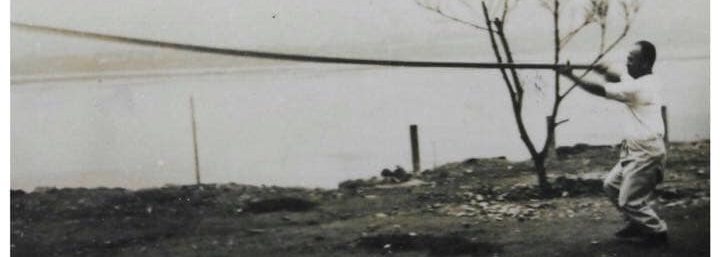
Among the group of Zhang Zhunfeng’s earliest students were the three Hong brothers. They were trained extensively how to fight with these arts with that as the goal, for their family was also home to a successful business and the father insisted that his sons be able to defend themselves, their family, and their business. In addition to tuition and gifts, the Hong family bought land and a house for Zhang, as well as a wife (whom they then had to fight her family for to take her away). All of this “tuition” led to their being trained particularly seriously and intensely by Zhang.
Hong Yiwen was the older brother who also did well in school such that he trained to become a traditional Chinese medicine doctor. He had his own small class on the side where he taught students. The famous wrestler, Chang Dongsheng, would often send his wrestling students to Hong Yiwen if they showed interest in learning how to strike by having them learn Xingyiquan.
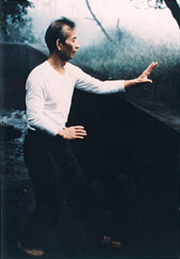
Hong Yimian was another brother who had been drafted into the Second World War to fight for the Japanese in the Philippines. He had real-world experience during the war and had no fear or hesitation in fights with others. Due to his smaller size, he specialized in the training of Baguazhang’s more nimble movements and jumping in and out of range more so than his other brothers.
One story about the Hong Brothers as a group that I always remember Luo Laoshi talking about was their fear of Zhang Zhunfeng. Decades later, even after he was dead, they would talk of his training and his fighting prowess in hushed tones, in both fear and reverence that was, for them, reserved for no one else. Zhang would place Hong Yixiang in front of him and beat on him using sticky hands training until the bruises and pain gave way to nimble body reactions and skills in close-in attack and defense. Zhang would charge after Hong Yimian over great distances while jumping at him and using all manner of footwork to drill in the movement and footwork that Hong Yimian would need to form the basis of his fighting style. They were all beat with sticks and long staffs while training their form movements if they were not up to the level of attainment that Zhang Zhunfeng wanted. Decades later they seemed to remember every bruise and every lesson.
Hong Yixiang
Hong Yixiang (romanized in different manners) is the main teacher of Luo Dexiu. Luo is his disciple and called him shifu. Hong was the youngest of the three Hong brothers (that specialized in martial arts) and was also the largest and strongest. Many teachers had remarked upon him as a youth that he was very good “material” for martial arts, meaning that he had a great naturally strong body for learning the martial arts. He had a tremendously strong base and core and trained diligently in his youth. I have seen pictures of him as a youth wherein each of his legs were like a thick tree trunk. He was very skilled in sanshou (zhannian tuishou) and was surprisingly nimble and flexible.
He trained in the Japanese arts of judo and kendo on the island as a youth before starting with his family’s southern kungfu, and his father would often invite teachers to the family’s house to teach his children. Later, when Zhang Zhunfeng became the family’s main teacher, he excelled in the more direct aspects of the arts of xingyi and bagua. He would go on to win many fights and challenges with his skills in xingyi and bagua, Zhang Zhunfeng would later on only teach his full sanshou curriculum to two students: Hong Yixiang and one other person (a laborer who carried large carts of goods for a living and was therefore tremendously strong as well). Hong Yixiang would go on to be probably the only person who would inherit Zhang Zhunfeng’s full transmission of his fighting skills and knowledge.
Luo Dexiu
Luo Dexiu (whom we often just refer to as Laoshi, meaning “teacher” in mandarin Chinese) is one of the foremost experts on internal martial arts in the world today. From his decades of experience in training, fighting, researching, and teaching, he is now known as an expert in the performance, use and teaching of Gao style Baguazhang, Hebei Xingyiquan and Chen Panling’s Taijiquan.
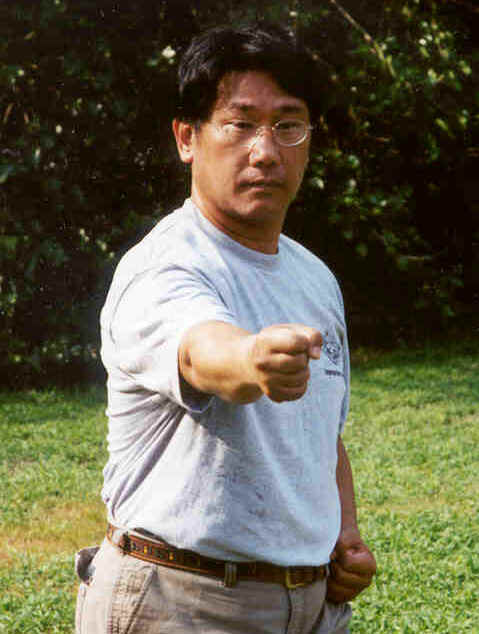
Luo Laoshi first began training in the late 60’s, while still in his early teens. His real start in martial arts began when he followed a classmate of his from grade school to Hong Yixiang’s school in 1971. From there he went on to become Hong Yixiang’s youngest, most promising and eventually one of his most successful students. His early experience including study of Hong Yixiang’s Tang Shou Dao program. He also began early on to enter full-contact fighting competitions. Along with these competitions he was introduced to the study of internal martial art of Xingyiquan and thus began a life-long pursuit of further skill and learning in the arts.
His early period of study can be broken down as first beginning with his attempts to attend Hong’s school full time – he did have to deal first with some concerns from his mother over this. His early starts in the school were therefore mostly concerned with the basic Shaolin training that Hong taught in his school that he termed Tang Shou Dao (The Way of the Tang Hand).
Soon after reentering Hong’s school, he began to train along with his friends in the school for competitions. This training was primarily devoted to the study of Xingyiquan as it was being taught for competition by Hong Yixiang. Luo entered his first fighting competition in 1972, a competition among all the martial arts schools of Taipei, Taiwan. He won first place. Months later he entered the national competition and took second place. He later went on to take first place in a number of successive tournaments and was the champion for 3 years running before he was required to enter the military.
After these experiences, he continued to train, he began to help his teacher by helping to teach newer students, he continued to enter competitions and he continued to take challenges for his teacher. He and his classmates also later began to research further the arts that their teacher taught. They learned that Hong’s primary martial arts teacher was named Zhang Zhunfeng. Luo then began searching out other students of Zhang Zhunfeng so as to further research his systems of teaching.
Taiwan has mandatory military service, so Luo Dexiu Laoshi eventually entered service in the Navy and was stationed further south in KaoHsiung. He found that he had a lot of free time on his hands while serving and decided to devote that free time to further practice of the martial arts. He continued to take challenge matches and did well for himself and the name of his teacher. One such incident was his defeat of the all-Army fighting champion, whom he dispatched in just a few seconds with a single bengquan to the chest that sent his opponent to the ground, unconscious, with foam appearing at his mouth.
Another big break for Luo Laoshi was when he found a bagua teacher by the name of Liu Qian. Liu was an early senior student of Sun Xikun, who came to Taiwan with the Nationalist Army. Luo Laoshi’s study with Liu Qian was eye-opening in many ways. Liu had a firm command of the theories and training methods unique to Baguazhang. Luo Dexiu spent many hours listening and asked many questions of Liu Qian so that he could understand the essence of Bagua theory and training. Luo Laoshi also learned many fighting methods, forms, weapons, neigong and throwing methods from Liu.
Luo Laoshi also continued to research further on his own family of internal martial arts, Yi Zong. He sought out anyone and everyone that he could find that practiced the system, comparing and contrasting how and what they taught. In this manner, he greatly broadened his understanding of how Zhang Zhunfeng taught during different periods of his time in Taiwan. He also discovered that Zhang’s primary fighting skills came from his training and teaching of Gao style Baguazhang.
At Zhang Zhunfeng’s death, there was a tape played containing the will and last wishes of Zhang Zhunfeng. In this will, Zhang stated that if anyone wished to understand the essence and breadth of his arts, they should seek out the three Hong brothers. That is exactly what Luo Dexiu continued to do, even though it would often cause difficulties with his main teacher, Hong Yixiang. But after spending decades of study, not only with Hong Yixiang but also with Hong Yiwen and Hong Yimian, Luo came to know the whole of Zhang’s fighting arts of Gao style Baguazhang and Li Cunyi’s Xingyiquan.

A new beginning…
Although Luo Dexiu spent nearly two decades helping Hong Yixiang to teach in his Tang Shou Dao school, it was not until 1990 that Luo Laoshi began to separately teach a lone student of Hong Yixiang’s who requested to learn Baguazhang, Marcus Brinkman. Soon after starting with Marcus, Luo Dexiu later expanded his class to include other students. Many of this early group of students later became Luo Dexiu’s first group of disciples. Many of them later went on to become skilled and successful martial artists and teachers in their own right.
Luo Laoshi has continued to teach to this day. He has been teaching regular classes in Taipei, Taiwan and currently teaches under the eaves of the National Theater Building at Chiang Kai Shek Memorial Park. His classes in Taiwan continue to produce skilled students in the art of Baguazhang.
In addition to teaching in Taipei, he also travels around the world each summer to his various student groups giving seminars. These seminars have been incredibly successful and he has also had many students come to a good level in the Internal Arts through their annual intensive studies.
His own personal school is now known as Qian Kun She. Therefore the full name of our family of internal martial arts is Yi Zong Ba Gua Men Qian Kun She.
Yi Zong Ba Gua Men Qian Kun She –

Yi Zong Ba Gua Men Qian Kun She is the full name of Luo Dexiu’s school of martial arts. Luo chose to honor his grand teacher Zhang Zhunfeng with the carrying on of his school name of Yi Zong Bagua Men. Luo Dexiu studied and learned with many of Zhang’s senior students, most notably he was a student of one of Zhang’s original disciples, Hong Yixiang, for over two decades.
Qian and Kun are the two opposing opposites of the traditional Bagua symbol in the YiJing. In modern Chinese, when one uses Qian and Kun together, it is like saying Alpha and Omega in English and Greek, it is also similar to saying yin and yang – it refers to everything, all possibilities, the universe. “She” means association in Chinese.
Under construction
The friendship of Wu Mengxia and Zhang Zhunfeng
Guang Wu Mountain martial arts
Song Yi Ren – man or myth?
Influence of Xingyiquan
Influences on Zhang Zhunfeng’s arts – bringing it all together
